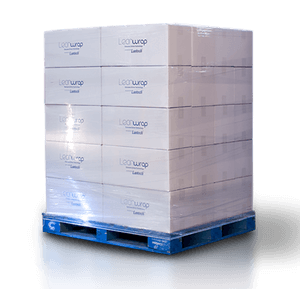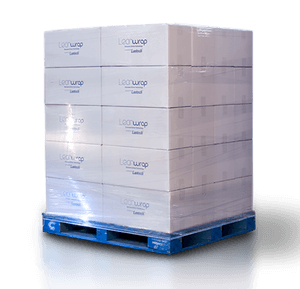The way it’s always been
Most people think of stretch wrapping as a packaging and/or material handling function. Why? Mostly because that’s just the way it’s always been.
Of course, the equipment often falls in the production and distribution work flow at the intersection of those functions, and therefore it’s a natural inclination.
There’s a problem with that, however, one that’s abundantly clear when you cruise down the aisles in a retail store.
The role of packaging
 Packaging has many roles. While not all are applicable to every product, packaging is expected to:
Packaging has many roles. While not all are applicable to every product, packaging is expected to:
- extend / guarantee safety, freshness & shelf life
- protect during storage, handling, and shipment
- sell the product
- unitize and consolidate
- deter/prevent theft
- confirm authenticity
Often enormous marketing resources are invested in optimizing the design and functionality of primary packaging.
A recent PackagingWorld article drew an interesting analogy between retail product packaging and Search Engine Optimization (SEO.) The article was based on key statistics including:
The First Moment of Truth
- 70% of decisions are made in the store
- 28% of shoppers with a plan still leave brand decision to the store environment
- 10% of shoppers will switch brands in the store
- 20% of shoppers buy impulsively in categories they had no intention purchasing in
We’ve all heard about packaging’s role in attracting attention and influencing consumers’ product selections on store shelves.
There’s another side to this, however. While it’s important for marketers to optimize their packaging to increase their rate of competitive selection, what’s often seen on store shelves is different than the designs, concepts, and product which comes off the end of production lines.
The difference results from changes that occur during shipment. Often they’re not huge, but they’re typically the difference between perfection as marketing intended and merchandising demands…and reality.
Want to improve your wrapping? Download our Guide to Automatic Pallet Wrappers
“Consumers consider appearance ‘somewhat’ important”
That’s the headline of another recent article – this one from Packaging Strategies. The article specifically addresses produce, and provides some interesting insights including:
When listed alongside other fresh produce descriptors, appearance proved to be more important than provenance (i.e., locally grown or sourced), the retailer’s food waste practices, and organic.
Can we extrapolate from produce to other products? Although the article, and the Harris Poll on which it reports, doesn’t explicitly say, we believe the answer is yes.
Further, experience indicates that this is an increasing challenge as source reduction and sustainability initiatives reduce the secondary packaging which traditionally provided individual product reduction. As more cases are replaced with shrink wrapped trays, pads or unsupported packs which are palletized, more product is susceptible to damage which is minor from a freight handling perspective but significant from the view of retail appeal.
Core function – not something “Beyond the Wall”
We know that stretch wrapping is often thought of a simple, final step on the way to the loading dock. That’s another logical vestige of “the way it’s always been.” However, it’s increasingly problematic as more product is shipped with less protective secondary packaging and more retail-ready displays – both shelf and pallet/end cap – are demanded by large retailers.
It’s especially challenging because often reports of damage don’t make it back to the folks who would do the root cause analysis or those who would intuitively understand the implications to brand and sales. For instance, a large user of high-speed wrapping equipment for beverages only started to emphasize the role of pallet wrapping after the CEO was shocked to see the disarray and impaired appearance of their product one day in a retail environment.
This calls for a team solution for procurement and damage reduction. Traditionally the domain of engineering and maintenance, decisions regarding stretch wrapping for retail products increasingly demands the involvement of a more diverse team. In addition to finance and management, we suggest that marketing, merchandising and sustainability are represented on every team charged with improving stretch wrapping operations.
Wondering what’s available that could help you and your company improve your high-speed stretch wrapping? Download our free guide here.
You may be interested in these other post:
This post was published on October 27, 2016 and updated on September 13, 2017.
October 27, 2016

